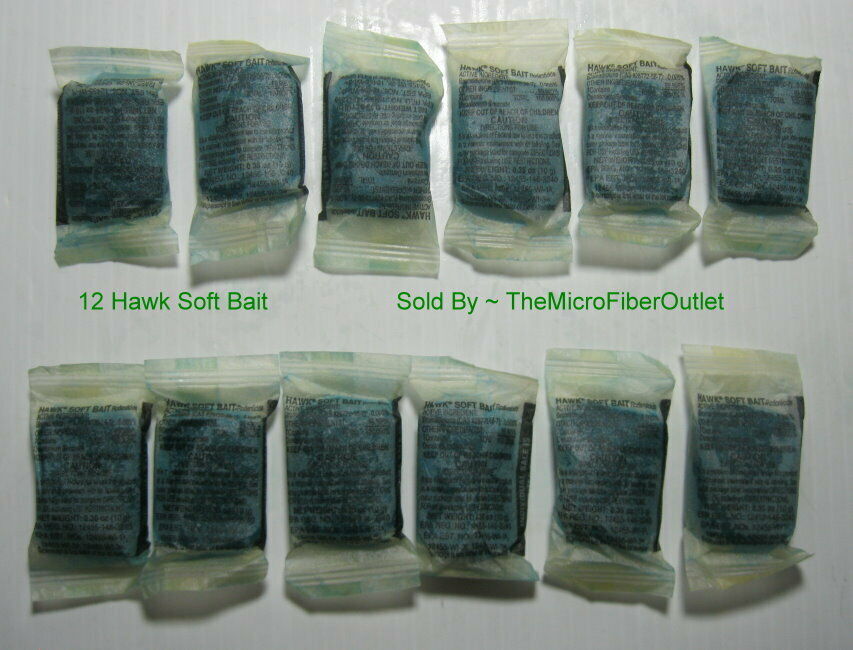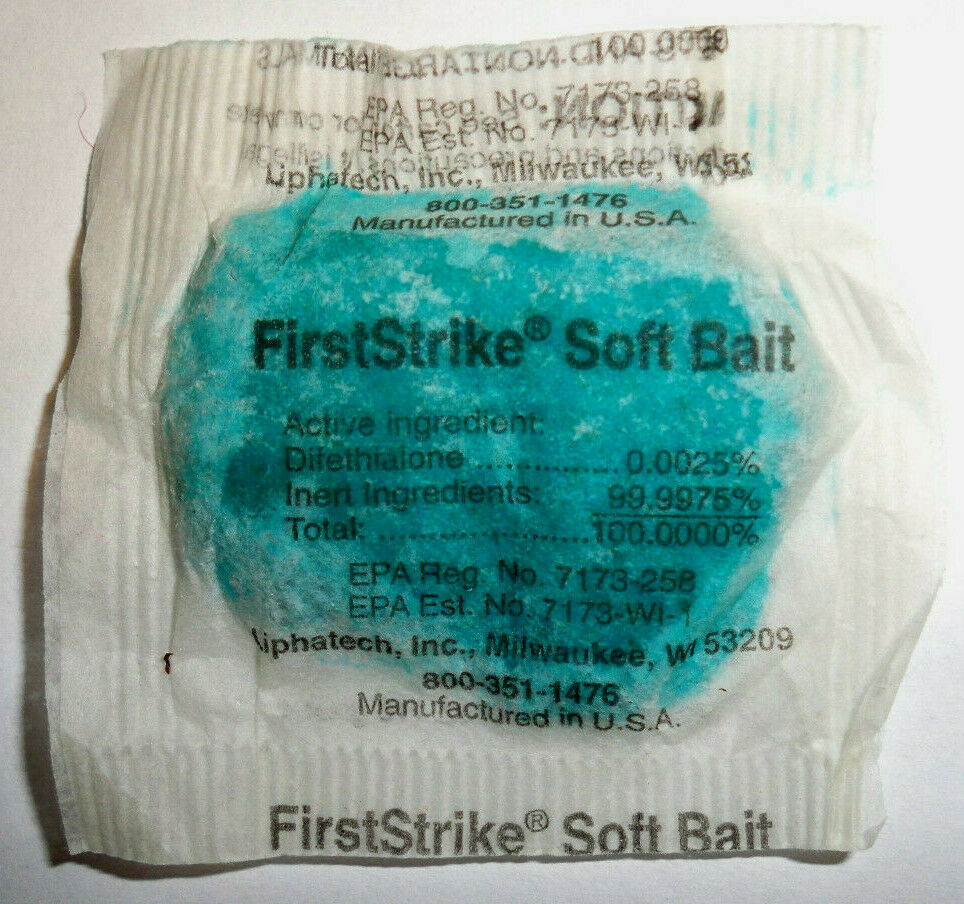-40%
Hawk Soft Bait Deadly .005% BROMADIOLONE! 1 Dozen (12) Rat&Mice Poison Free Ship
$ 6.27
- Description
- Size Guide
Description
Hawk Soft Bait RodenticideThe only Soft Bait with the Power of Hawk
12 Soft Bait Sachets .38 Oz Each 10 Grams Each
.005% Bromadiolone
is the most deadly Rat & Mice Poison Made
Hawk baits have been an industry standard for many years, combining proven palatability and rodent acceptance with a formula that can kill rats and mice after a single feeding.
Hawk baits are made with the active ingredient
Bromadiolone
, a second-generation anticoagulant.
Hawk Soft Bait is formulated with select ingredients including a unique blend of fats and oils for maximum palatability.
Includes an outstanding preservative package to prevent molding and won't freeze or melt in extreme temperatures.
- Made by Motomco in the
USA
- Rats and mice may consume a lethal dose in one night's feeding with first dead rodents appearing 4-5 days after feeding begins
- Formulated with select ingredients including a unique blend of fats and oils for maximum palatability.
- Includes an outstanding preservative package to prevent molding
- Bait won't freeze in extreme cold or melt in high temperatures
- Manufacturing process ensures contact with sachet paper, maximizing bait acceptance
- Can be easily secured in a bait station or used indoors in areas away from children, pets or non-target animals
Do not place where pets, children or wildlife could
find it.
I place under my home which has no large access
for other animals to enter. When I had them in the walls
I placed under the water heater. They died in a few days.
Roof Rats:
Roof rats are agile climbers and live above the ground – in trees, shrubs, dense ivy or vine growths, overhead storage areas in sheds and garages, and in attics.
The roof rat is found in warm, tropical and semi-tropical climates.
Grizzled gray, black or tan Pointed snout and hairless ears that are larger than Norway rats' ears Tail is hairless, dark in color and longer than the combined head and body Need a source of water Typically reproduce 3 times a year averaging 5-8 young in each litter Eats citrus and other tree fruit, vegetables and grains Can gain access to homes from trees or power lines
Norway
Rats:
(a.k.a. brown rat, house rat, gray rat, wharf rat or sewer rat)
Norway
rats live in close proximity to people. Found indoors and out, in basements, barns, and warehouses,
Norway
rats will burrow under rubbish, wood piles and buildings.
Brown or red-gray in color Blunt muzzle Tail is hairless and about same length of combined head and body Weigh up to one pound Typically reproduce in the spring and fall, averaging 4-6 litters per year with 6-12 young per litter Weak eyesight, but excellent hearing, sense of smell, taste and touch Will travel 100 – 150 feet from its nest in search of food
House Mouse:
House mice are the most common rodents and hardest to control. Found indoors, behind walls, in cabinets and furniture, house mice are very curious and quick to notice new objects in the area.
Light brown to gray in color Small – 5-7" long, including tail Tail is hairless and same length as the body Reproduce year-round, averaging 5-7 litters with each averaging 5-7 young Poor eyesight, but a keen sense of hearing, smell and taste Mostly nocturnal and will travel 10 to 30 feet from its nest in search of food Found in nearly all countries
General Rat & Mouse Questions
Q. Will rats and mice eat enough bait to die in a single feeding?
A.
House mice and rats usually will consume a lethal dose in a single feeding but it may take 2 or more days to die depending on the type of bait they ate.
Q. Will rats and mice leave their nest for food?
A.
House mice usually travel only 10-30 feet from the safety of their home. Roof rats and
Norway
rats will typically travel 100-150 feet in diameter from their nests in search of food or water.
Q. How small of an opening can rats and mice fit through?
A.
House mice can fit in spaces as small as a dime while rats can flatten themselves to squeeze through cracks the size of a nickel!
Emergency
Q. Who should I call in case of an emergency?
A.
If bait is ingested by any non-target animal please call the poison control hotline immediately.
Q. Is direct consumption bait toxic to my pet?
A.
Direct consumptions could be harmful to your pet. Danger to your pet depends on the weight of the animal and the amount of bait ingested. We recommend calling the poison control hotline immediately if ingestion occurs.
Q. Will my dog or cat die if it eats a dead rodent that died as a result of Hawk bait?
A.
Toxicity to your pet depends on the type of active ingredient ingested by the rodent, the amount of bait ingested, as well as the size of your pet. The chances that your pet will die are low, however, we recommend calling the poison control hotline as a precaution.
USA
BIDDERS ONLY!
APO/FPO OK!
All orders are send via 1st Class Mail with A Tracking number.
Hawk soft bait will be in zip lock bags and sent in a padded envelope.
I ship most orders in one day.
Somedays in one hour.
I live 1 mile from the Post Office.
Thanks for the order.
Gary
Johnson
Largo
, FL
Selling on EBay since 1997


















